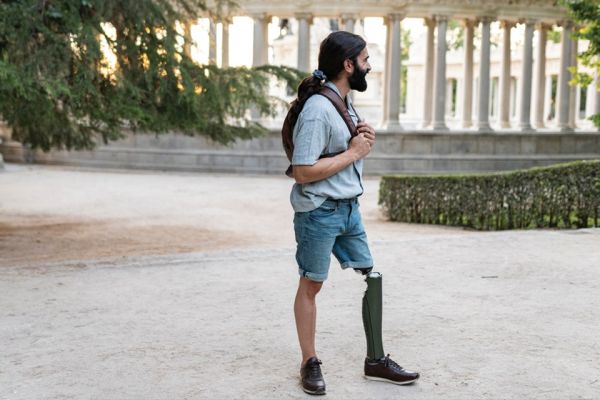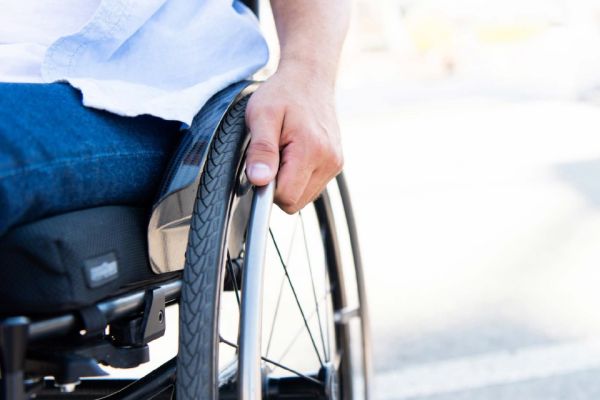Preventing Falls

Falls are the leading cause of injury among seniors and roughly half of these falls occur at home. But many falls are preventable.
Every year, approximately one-third of seniors experience a serious fall that results in consequences to their health, independence and quality of life. Reduce your risk with these tips:
Exercise regularly. It is recommended that adults aged 65 years or older should do at least 150 minutes of moderate to vigorous aerobic physical activity per week, in bouts of 10 minutes or more. If you have poor mobility, physical activity can help enhance your balance and prevent falls. Make sure you have proper footwear that includes rubber soles, low heels and laces or Velcro that securely fasten. And don't be embarrassed to use aids to daily living – it can keep you safe and active.
Take a bone density test. Osteoporosis is a disease that makes bones brittle and more likely to break during a fall. At least 80 per cent of broken bones in older adults are related to osteoporosis, with older women at greatest risk of developing the disease. Ask your doctor for a bone mineral density test to determine your risk.
Know your medications. Taking several medications increases your chance of falling. Speak to your doctor about all the medications you are taking to learn why you are taking them, what side effects they have (such as drowsiness or dizziness) and if there are alternatives.
Reduce home hazards. These include loose carpets and cords on the floor, items blocking the stairs and poor lighting. Also consider installing assistive devices, such as grab bars or raised toilet seats.
If you fall. Try to land on your buttocks to prevent more serious injuries. Don't rush to get up. Make sure you are not injured before trying to get up or letting others help you get up. And don't let the fear of falling again prevent you from being active. Inactivity creates an even greater risk of falling.
Good information from the Public Health Agency of Canada, including the Safe Living Guide — A Guide to Home Safety for Seniors, You CAN Prevent Falls! and Steps to Stair Safety at Home. Call 1-800-OCa-nada (622-6232) or visit Public Health .
Exercise regularly. It is recommended that adults aged 65 years or older should do at least 150 minutes of moderate to vigorous aerobic physical activity per week, in bouts of 10 minutes or more. If you have poor mobility, physical activity can help enhance your balance and prevent falls. Make sure you have proper footwear that includes rubber soles, low heels and laces or Velcro that securely fasten. And don't be embarrassed to use aids to daily living – it can keep you safe and active.
Take a bone density test. Osteoporosis is a disease that makes bones brittle and more likely to break during a fall. At least 80 per cent of broken bones in older adults are related to osteoporosis, with older women at greatest risk of developing the disease. Ask your doctor for a bone mineral density test to determine your risk.
Know your medications. Taking several medications increases your chance of falling. Speak to your doctor about all the medications you are taking to learn why you are taking them, what side effects they have (such as drowsiness or dizziness) and if there are alternatives.
Reduce home hazards. These include loose carpets and cords on the floor, items blocking the stairs and poor lighting. Also consider installing assistive devices, such as grab bars or raised toilet seats.
If you fall. Try to land on your buttocks to prevent more serious injuries. Don't rush to get up. Make sure you are not injured before trying to get up or letting others help you get up. And don't let the fear of falling again prevent you from being active. Inactivity creates an even greater risk of falling.
Good information from the Public Health Agency of Canada, including the Safe Living Guide — A Guide to Home Safety for Seniors, You CAN Prevent Falls! and Steps to Stair Safety at Home. Call 1-800-OCa-nada (622-6232) or visit Public Health .
Known as the “silent thief”, osteoporosis is characterized by low bone mass and deterioration of bone tissue.
Osteoporosis can occur over a number of years without any symptoms and unfortunately, by the time affected bones break or fracture, the disease is already fairly advanced and less treatable. The most common fractures associated with osteoporosis are in the hip, spine, wrist and shoulder. Still, no single cause for osteoporosis has been identified.
To learn more, contact Osteoporosis Canada at 1-800-463-6842 or visit Osteoporosis Canada.
To learn more, contact Osteoporosis Canada at 1-800-463-6842 or visit Osteoporosis Canada.
Canadians 50 years of age or older are at highest risk. At least 1 in 3 women and 1 in 5 men will break a bone due to osteoporosis in their lifetime. Fractures from osteoporosis are more common than heart attack, stroke and breast cancer combined.











 How to resolve AdBlock issue?
How to resolve AdBlock issue?